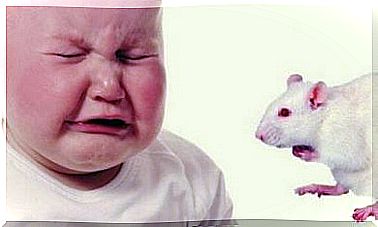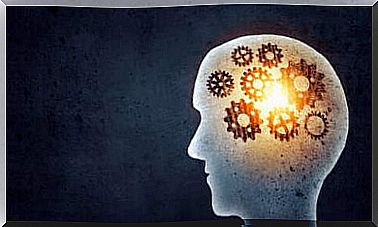Relational Framework Theory And Human Behavior

Relational frame theory (RFT) from English, is a theory of language and cognition that serves as an experimental basis for acceptance and commitment therapy (ACT). From the perspective of relational framework theory, behavior and language are really related.
This framework provides a functional explanation of some of the findings derived from cognitive research in language. It also provides a basis for studying phenomena in a monistic way. It is a theory that aims to study the so-called “mental processes” in an operational and experimental way.
Relational framework theory: Concepts and properties
To understand what a relational framework is, you need to know that we humans do not just learn from direct experiences. We also learn indirectly by relating stimuli separately from their physical properties. This extra linguistic value of stimuli is what will condition our ability to control relationships and functions.

The properties of the relational framework theory
To connect and transform both cognition and language, there are three properties:
- Mutual “bonding”: A relationship between two stimuli involves responding to one in the form of the other, and vice versa. If A in a given context is directly related to B, then there is a derivative relationship between B and A.
- Combined bonding: One of the defining characteristics of relationship frameworks has to do with the ability to mutually combine events. If A is related to B in a characteristic way, and A is related to C, B and C would also be related to each other.
- Function transformation: If one stimulus has a function, and then another stimulus establishes a relationship with it in that context, the function of both of them is transformed by the relationship. For example, if someone tells you that there is a better and cheaper product than the one you normally use, the likelihood that you will buy it increases. The function has been transformed by the relationship that has been established.
Types of contextual clues in relational framework theory
Reciprocal links, multiple link combinations and transformations of functions are components of a broader relational response pattern. Relational framework theory calls these “relational frameworks”. Experts use this concept to explain how we learn to make associations derived from how stimuli relate to each other.
Relational frameworks can be combined to generate verbal rules that govern behavior. This process allows people to organize, predict and control how consequences are achieved in relation to the context. This way, you can anticipate future situations without having experienced them.
Contextual keys in relational framework theory
Each learning context offers several stimuli with the potential to acquire the value of the keys that govern the development of relational frameworks. RFT distinguishes two subtypes of contextual keys:
- Those who control the type of relationship specified ( Crel ). The most notable types are coordination, opposition, distinction, comparison, spatial, temporal, causal, hierarchical and deictic.
- Each stimulus or event can have several psychological functions. Because of this, a second class of contextual cues (Cfunc) will specify which stimulus functions are to be transformed (Torneke, 2010).
An explanation of human suffering
In this theoretical framework, it can be deduced that some language characteristics make psychological disorder very common. One of them would be the ability to literally believe what our thoughts, feelings, and moods tell us, and then act on what they dictate.
In this way, if a person thinks of themselves as “useless” and “not worth anything”, this will probably severely limit their attitude. We could observe how many people give up goals that they actually have the opportunity to achieve, simply because they think they will never reach them.
Types of verbal rules in relational framework theory
Relational framework theory has gone deeper into this. It aims to explain the main types of verbal regulation (Luciano and Wilson, 2002):
Compliance rules
In this type of rule , the consequences are achieved by complying with them. The person who stated the rule applies the consequences. These are behaviors that are largely determined by what the cultural context determines is appropriate. For example, a mother might say, “If you do not eat your food, I will punish you.”
Tracking rules
These are behaviors that are regulated orally, which guide the person to achieve specific strengthening stimuli in the given context. These are directly related to the consequences that the behavior causes. For example, “If you eat, you will not feel hungry and you will feel better.” In this case, the consequences will depend on the characteristics of the food. They are thus independent of the person who stated the rule.
Reinforcing rules
This is a transformation of functions that determines whether a verbal stimulus, object or event acquires an amplifying or aversive value. However, it is important to note that they always work in combination with compliance and tracking rules.
Amplification is a verbal rule that changes the strengthening properties of a stimulus that acts as a consequence. In other words, it increases or decreases the likelihood that such a stimulus will affect our behavior.
For example, if you walk past an ice cream parlor with some friends, one of them might say, “Oh, that would have been great with an ice cream right now!” When you hear them say this, you can to some extent feel the taste of the ice cream. As a result, it increases the likelihood that you will buy one.
Behavioral patterns determined by oral rules
Oral regulations allow us to control our behavior depending on the social context. However, they can also have various side effects:
- A rigid deviation from the rules of conformity means that the individual is insensitive to the consequences of his actions in a social context. An example might be: “You have to suffer a lot to be a good mother”. The rigidity of the statement will therefore limit the mother from being able to defend her fundamental rights.
- Tracking rules determine behaviors that are aimed at achieving short-term benefits. However, this often limits the formation of correct behavior, which in turn will further personal development. An example of this is that some people think they have to use drugs to calm down, but they do not think about the long-term consequences of doing just that.
- Reinforcement rules work in coordination with rigid or counterproductive monitoring of rules. They can specify emotionless functions under personal conditions, such as “Worry makes it impossible to live”, or appetizing functions for constant and unattainable emotional conditions, such as “If you are happy, you are healthy”.

The contributions to and benefits of relational framework theory
Relational framework theory has led to the development of an analytical system that offers many benefits:
- It is a distrustful approach based on a relatively small number of basic principles and concepts to explain the phenomena of language and cognition.
- It allows us to conduct a study of human language in accordance with the processes that prepare it and whose definition is carefully specified.
- It is wide-ranging and offers credible explanations and new empirical approaches to a wide range of complex human behaviors.
The principles are available for direct observation, especially in laboratory conditions. Experts have subjected it to several empirical tests, and it has passed all of them. Clinical applications have proven to be effective, and many potential applications are still under development.









